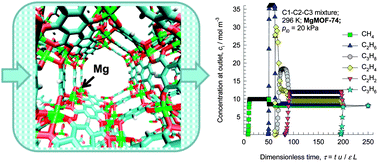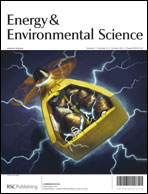Metal–organic frameworks with potential for energy-efficient adsorptive separation of light hydrocarbons†
Abstract
The separation of hydrocarbons with carbon numbers in the 1–3 range is of great significance in the purification of natural gas, production of ethylene and propylene with the required 99.5%+ purity levels as feeds to polymerization reactors, and separation of ethyne from mixtures with ethylene. In this study the performances of a total of 19 different MOFs, carefully selected to span a wide range of functionalities, were evaluated for a variety of separation tasks. For all separation tasks investigated, MOFs with high density of open metal sites, CoMOF-74, MgMOF-74, and FeMOF-74, have significantly better separation potential than other MOFs, ZIFs or zeolites that have been suggested in the literature. Of particular significance is the possibility offered by CoMOF-74, MgMOF-74, and FeMOF-74 for “fractionating” a 6-component CH4/C2H2/C2H4/C2H6/C3H6/C3H8 mixture to yield individual pure components. Such separations are likely to have a significant industrial impact, resulting in significant energy savings when compared to current technologies that rely on distillation.


 Please wait while we load your content...
Please wait while we load your content...